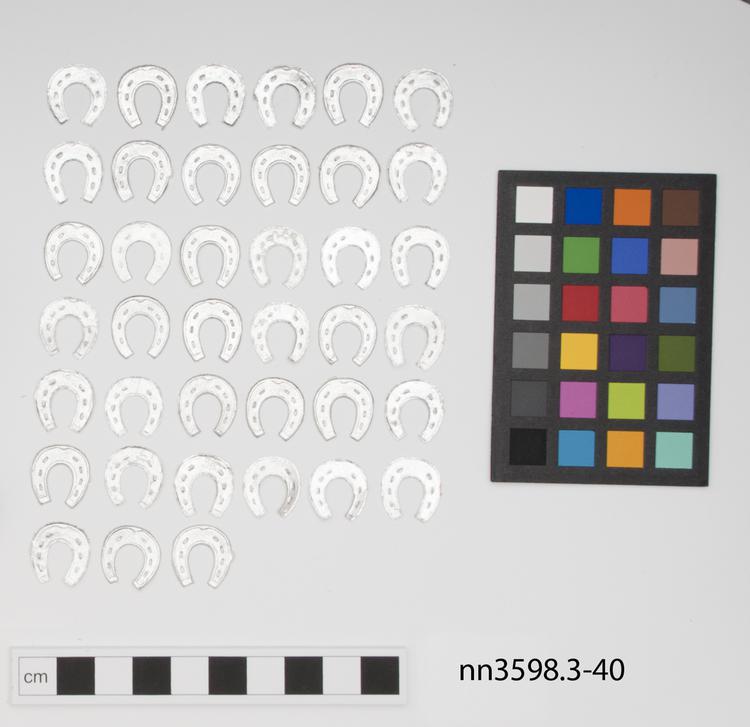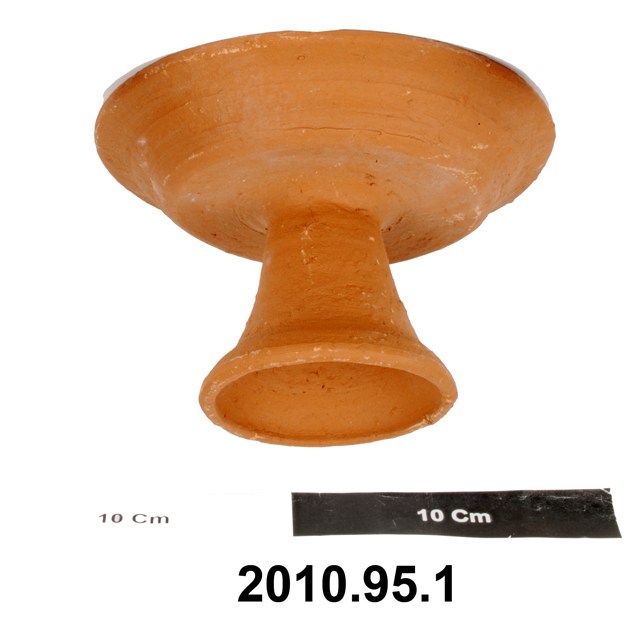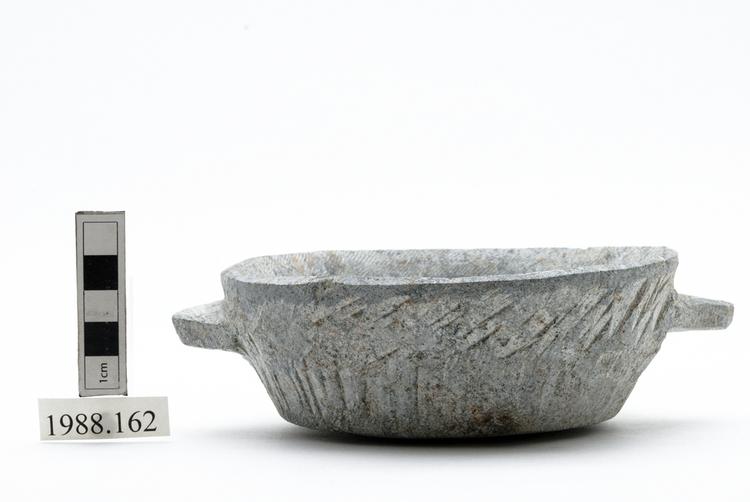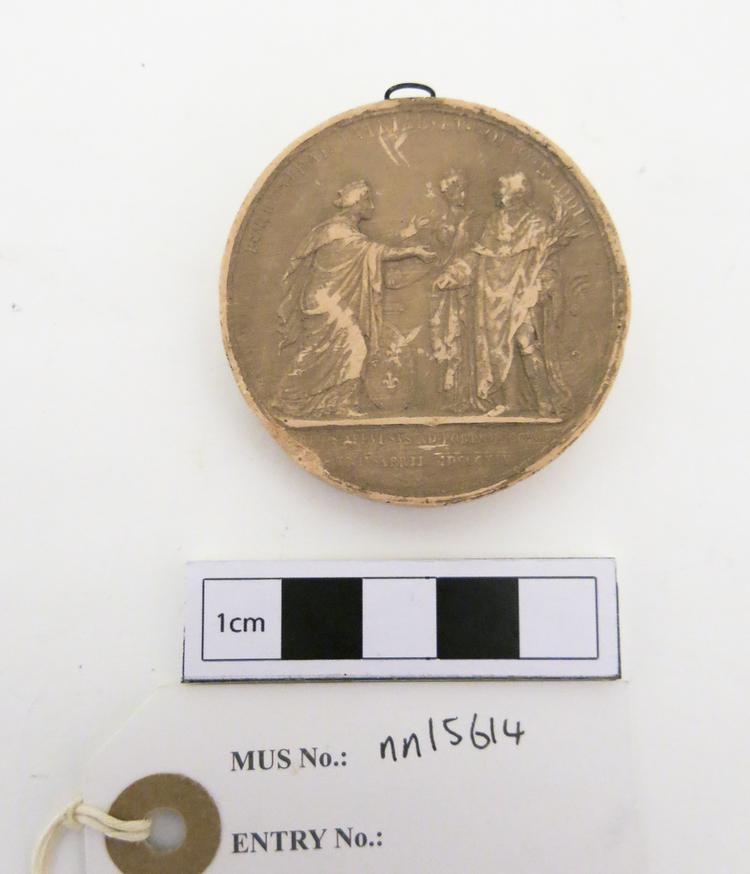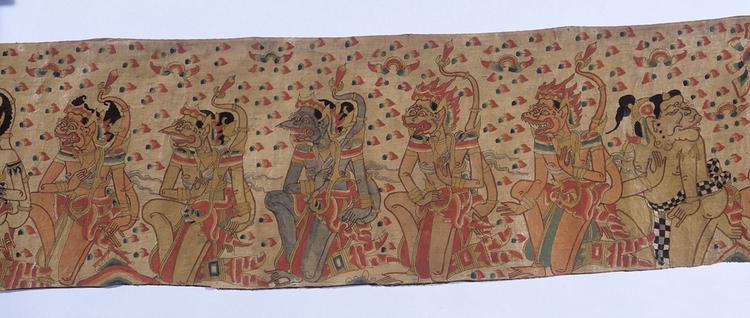
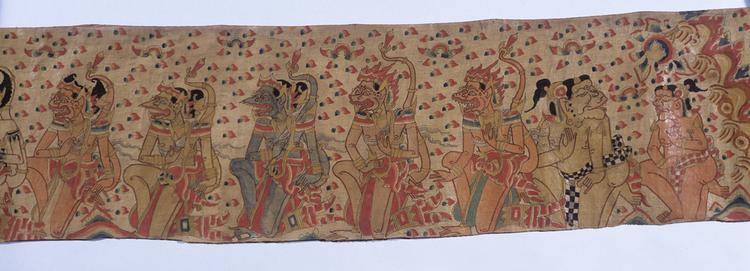
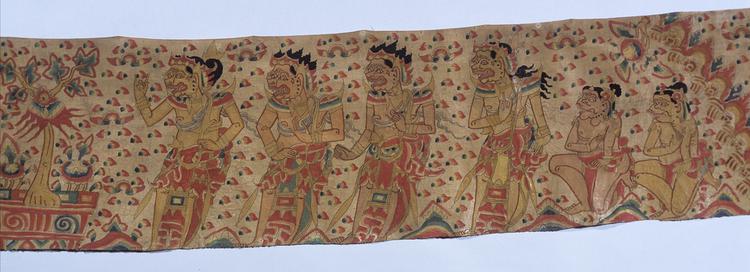
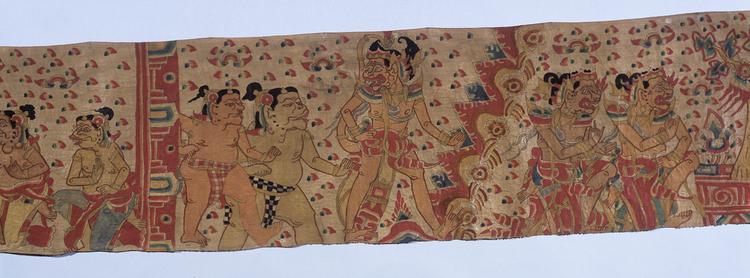
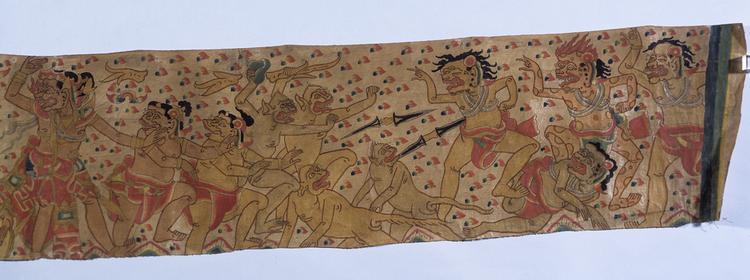
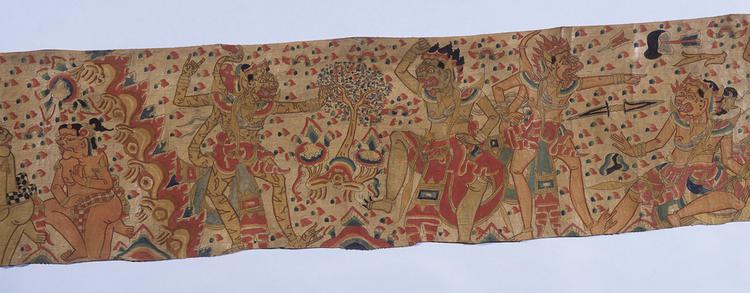
Very long, narrow temple hanging, ider-ider, in the form of a multicoloured painting on cloth. It depicts five scenes from a battle from the Ramayana. These types of cloth are hung along the eaves of a temple building during religious ceremonies, especially in the period between Galungan and Kuningan. The banner reads from right to left. On the extreme right are bale, engaged in a battle with monkeys from Hanoman's army, behind whom are Delem and Sangut, servants on the side of Rahwana and his allies; to their left are two demons, raksasa, separated by daggers from an ape who is to the right of another raksasa. A tree separates the raksasa from Sempati, the monkey with the skin of a leopard. A band of flames divides this scene from the next. Here at the right is Merdah, one of Rama's servants, with Twalen, the other, to his left, then Drowa, Nale, Nila, Goaksa, Anggada and the white ape Hanoman, all allies of Rama. They are kneeling behind Wibisana, then Laksmana and at the front Rama. Rama addresses Anggada who kneels with Sugriwa standing behind him. Behind Sugriwa is Wenara. A flame barrier divides this scene from the next. On the right of this scene is Sangut with to his left Delem, and four standing demons, raksasa. They are separated by a potted tree from two others who are kneeling. Beyond the flame barrier marking the end of this scene Anggada stands, looking behind him to Twalen with Merdah behind him. A stylised wall marks the end of this scene. The last scene on the left of the banner has at the extreme right Sangut with Delem to his left, with a group of ministers or patih standing to the right of Kumbakarna who points aggressively to Anggada, who is the other side of a potted tree. Behind Anggada are two kneeling raksasa.



